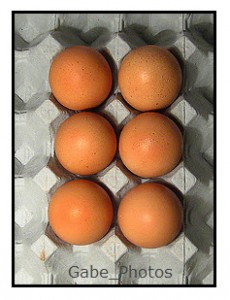 The older an egg is the more buoyant it is in water. Buoyancy is the ability of an object to float in a fluid (liquid or gas). For example, helium balloons are buoyant in air and boats are buoyant in water.
The older an egg is the more buoyant it is in water. Buoyancy is the ability of an object to float in a fluid (liquid or gas). For example, helium balloons are buoyant in air and boats are buoyant in water.
To test the freshness of an egg, fill a bowl with water. Then place the egg in the water. Note: There has to be enough water to cover the egg if it stands on ends.
Results:
1. Generally, fresh eggs will lie on their side on the bottom of the bowl.
2. Eggs that tilt are still fresh and good to eat.
3. Eggs that stand on the pointed end with the large end up are said to be safe to eat. UUM! You can make this decision for yourself.
4. If an egg floats–this means in the center of the water or on top of the water– DON’T EAT IT.
What’s Happening?
Egg shells are porous enough to allow gases to pass through. As an egg ages the accumulation of air that enters the egg increases. Like anything filled with air, the more air the more buoyant the object is in water.
Rotten eggs produce a sulfur gas that smells really bad. This gas also collects inside the egg making it more bouyant.
Buoyancy is also a measure of the density of an object. Density is a measure of the amount of matter in a specific volume. Since mass is a measure of the amount of matter, density can be defined by this formula:
density = mass /volume
The formula is read as, density equals mass divided by volume.